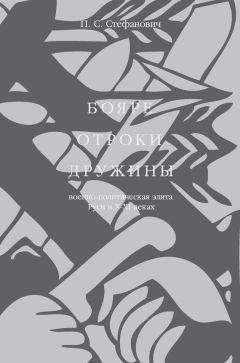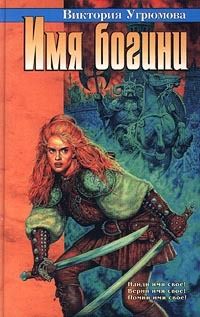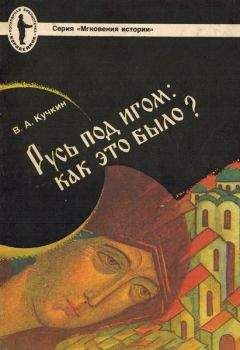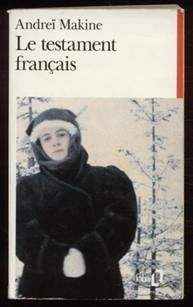• Stenton 1943/1971 – Stenton F. M., Anglo-Saxon England, Oxford 1971 (1-е изд.: 1943 г.).
• Steuer 1982 – Steuer H., Frühgeschichtliche Sozialstrukturen in Mitteleuropa: eine Analyse der Auswertungsmethoden des archäologischen Quellenmaterials, Göttingen 1982.
• Steuer 1992 – Steuer H., Interpretationsmöglichkeiten archäologischer Quellen zum Gefolgschaftsproblem // Beiträge zum Verständnis der Germania des Tacitus 1992, с. 203–257.
• Steuer 1998 – Steuer H., Gefolgschaft: Archäologisches // RGA, 10,1998, C. 546–554.
• Steuer 2006 – Steuer H., Warrior bands, war lords and the birth of tribes and states in the first millennium AD in Middle Europe //Warfare and society: archaeological and social anthropological perspectives, ed. by Ton Otto, Aarhus, 2006, с 227–236.
• Strauch 2006 – Strauch D., Vitherlagsret// RGA, 32,2006, с 461–469.
• Struminski 1996– Struminski В., Lingustic Interrelations in Early Rus': Northmen, Finns, and East Slavs (Ninth to Eleventh Centuries), Roma 1996.
• Surher-Meyer 1994 – Surber-Meyer N.-L., Gift and exchange in the Anglo-Saxon poetic corpus: a contribution towards the representation of wealth, Geneve, 1994.
• Svatý Prokop, Čechy 2006 – Svatý Prokop, Čechy a střední Evropa. Ed. P. Sommer. Praha, 2006.
• Sven Aqqesen 1992 – The Works of Sven Aggesen Twelth-century Danish Historian, translated with introduction and notes by Eric Christiansen, London 1992.
• Tacitus 1988 – P. Cornelius Tacitus, Germania. Interpretiert, herausgegeben, übertragen, kommentiert und mit einer Bibliographie versehen von Allan A. Lund, Heidelberg 1988.
• Tacitus 1990 – Tacitus, Germania, hrsg. von Gerhard Perl, Berlin 1990.
• Tiefenbach, Claude 1998 – Tiefenbach H., Claude D., Gardingus // RGA, 10, 1998, с 441–442.
• Teüenbach 1939 – Teilenbach G., Königtum und Stämme in der Werdezeit des Deutschen Reiches, Weimar 1939.
• Theqanus 1995 – Theganus, Gesta Hludowici Imperatoris / Thegan, Die Taten Kaiser Ludwigs, hrsg. und übersetzt von Ernst Tremp // MGH, SS rer. Germ, t. 64, Hannover 1995.
• Thörnqvist 1948 – Thörnqvist С Studien über die nordischen Lehnwörter im Russischen, Uppsala 1948.
• Timpe 1988/1995 – Timpe D., Zum politischen Charakter der Germanen in der «Germania» des Tacitus // Timpe D., Romano-Germanica. Gesammelte Studien zur «Germania» des Tacitus, Stuttgart, Leipzig 1995, с 145–168 (1-е изд.: 1988 г.).
• Timpe 1998 – Timpe D., Gefolgschaft: Historisches // RGA, 10,1998, S. 537–546.
• Timpe 2008 – Timpe D., Die Germania des Tacitus. Germanische Ethnographie und römische Zeitgeschichte // Feindliche Nachbarn: Rom und die Germanen, hrsg. von H. Schneider, Köln etc. 2008, с 167–200.
• Timpe, Scheibelreiter, Daxelmüller 1998 – Timpe D., Scheibelreiter G., Daxelmüller Ch., Geheimbünde // RGA, 10,1998, с 558–565.
• Tinnefeld 2005 – Tinnefeid F., Zum Stand der Olga-Diskussion // Zwischen Polis, Provinz und Peripherie. Beiträge zur byzantinischen Geschichte und Kultur, hrsg. von L. Hoffmann, Wiesbaden 2005, с 531–567.
• Třeštili 1997– Třeštík D., Počátky Přemyslovců. Vstup Čechů do dějin (530–935), Praha 1997.
• Třeštík2001 – Třeštík D., «Eine grosse Stadt der Slawen namens Prag» (Staaten und Sklaven in Mitteleuropa im 10. Jahrhundert) // Boleslav II. Der tschechische Staat um das Jahr 1000. Internationales Symposium Praha 9.-10. Februar 1999, hrsg. von Petr Sommer, Praha 2001 (=Colloquia mediaevalia Pragensia 2), с. 93–138.
• Třeštík 2006 – Třeštík D. Slovanská liturgie a písemnictví v Čechách 10. století. Představy a skutečnost // Svatý Prokop, Čechy 2006, с 189–218.
• Třeštík, Žemlíčka 2007 – Třeštík D., Žemlička J. O modelech vývoje přemyslovského státu// ČČH, t. 105 (2007), čislo 1, с 122–164.
• Vaíllant 1947— Vaillant A. Une homélie de Métode // RÉS, t. 23, fascicules 1–4, Paris, 1947, с 34–47.
• van Wíjk 1941 – van Wijk N., Zur sprachlichen und stilistischen Würdigung der Vita Constantini // Südost-Forschungen, Bd. 6. München 1941, с 74-102.
• Vaněček 1949– Vaněček V, Les «družiny» (gardes) princiěres dans les débuts de l’État tcheque // CPH, t. II, 1949, с. 427–448.
• Vaněček Prameny 1957– Vaněček V, Prameny к dějinám státu a práva v Československu (chrestomatie). Část I, Praha 1957.
• Vaniček 2007– Vaniček V, Sociální mentalita české šlechty: urozenost, rytířství, reprezentace. Obecné souvislosti, pojetí družiny, «modernizační» trend // Šlechta, moc a reprezentace 2007, с 141–188.
• Vašíca 1965/1996 – Vašica J., Literární památky epochy velkomoravské, 863–885, Praha, 1996 (1-е изд.: 1965 г.).
• Víta Methodíí 1870 – Vita Sancti Methodii russico-slovenice et latine, edidit Fr. Miklosich, Vindobonae 1870.
• von Olberg 1991 – von Olberg G., Die Bezeichnungen für soziale Stände, Schichten und Gruppen in den Leges barbarorum, Berlin-New York 1991.
• von See 1964 – von See K., Altnordische Rechtswörter. Philologische Studien zur Rechtsauffasung und Rechtsgesinnung der Germanen, Tübingen 1964.
• Waitz 1844/1953 – Waitz G., Deutsche Verfassungsgeschichte: Die Verfassung des deutschen Volkes in ältester Zeit, Bd. 1, Darmstadt 1953 (4-е издание последнего прижизненного, вышедшего в 1879 г.; 1-е изд.: 1844 г.).
• Wasilewski 1958 – Wasilewski Т., Studia nad skladem spolecznym wczesnošreniowiecznych sil zbrojných na Rusi // Studia wczesno-šreniowieczne, t. IV, Wroclaw-Warszawa 1958, с 301–389.
• Weingart 1934 – Weingart M., První česko-církevněslovanská legenda o svatém Václavu. Rozbor filologický // Svatováclovský sborník. Na památku 1000. výročí smrti knížete Václava svatého. I: Kníže Václav svatý a jeho doba, Praha 1934, с 863-1088.
• Weiser 1927 – Weiser L., Altgermanische Jünglingsweihen und Männerbünde: ein Beitrag zur deutschen und nordischen Altertumsund Volkskunde, Brühl 1927.
• Wenskus 1961 – Wenskus R., Stammesbildung und Verfassung. Das Werden der frühmittelalterlichen qentes, Köln etc. 1961.
• Wenskus 1974 – Wenskus R., Probleme der germanisch-deutschen Verfassungs– und Sozialgeschichte im Lichte der Ethnosoziologie // Historische Forschungen für Walter Schlesinger, hrsg. von Helmut Beumann, Köln 1974, с 19–46.
• Wenskus 1992 – Wenskus R., Die neuere Diskussion um Gefolgschaft und Herrschaft im Tacitus' Germania // Beiträge zum Verständnis der Germania des Tacitus 1992, с. 311–331.
• Werner 1994/1999– Werner K. F., Adel– «Mehrzweck-Elite» vor der Moderne? // Werner K. F., Einheit der Geschichte. Studien zur Historiographie, hrsg. von W. Paravicini, Sigmaringen 1999, с 120–136 (1-е изд.: 1994 г.).
• Whitelock 1952/1974 – Whitelock D., Beginnings of English Society, Harmondsworth 1974 (1-е изд.: 1952 г.).
• Wihoda 2007– Wihoda M., Kníže a jeho věrní. Kosmas o světě předáků a urozených // Šlechta, moc a reprezentace 2007, с 11–30.
• Wolverton 2001 – Wolverton L., Hastening towards Prague. Power and Society in the Medieval Czech Lands, Philadelphia 2001.
• Woolf 1976 – Woolf R., The Ideal of Men Dying With Their Lord in the Germania and in The Battle of Maldon // Anglo-Saxon England, vol. 5, Cambridge etc. 1976, с 63–81.
• Wormland 1999 – Wormland P., Review: Evans S., Lords of Battle // EHR, vol. CXIV, No. 457 (1999), p. 672–673.
• Worthy, Zuckerman 2004 – Wortley J., Zuckerman C, The Relics of Our Lord's Passion in the Russian Primary Chronicle // BB, т. 63 (88), 2004, с. 67–75.
• Žemlička 1995 – Žemlička J., Das Reich des bömischen Boleslavs und die Krise an der Jahrtausendwende // Archeologické rozhledy, t. XLVII (1995), с 267–278.
• Žemlíčka 1997 – Žemlička J., Čechy v době knížecí (1034–1198), Praha 1997.
• Žemlíčka 1998 – Žemlička J., «Dvacet pánů» české země. К vymezení panujícího rodu v 11. a 12. století // Časopis Matice moravské, vol. 17, 1998, с 293–309.
• Žemlíčha 2000 – Žemlička J., Gemeinsame Züge der mitteleuropäischen Staaten // Europas Mitte um 1000, hrsg. von Alfried Wieczorek und Hans-Martin Hinz, Bd. 1, Darmstadt 2000, с 830–833.
• Zháněl 1930 – Zháněl S., Jak vznikla staročeská šlechta, Brno 1930.
• Ziemann 2007– Ziemann D., The Rebellion of the Nobles against the Baptism of Khan Boris (865–866) // Post-Roman Towns, Trade and Settlement in Europe and Byzantium, vol. 2: Byzantium, Pliska, and the Balkans, ed. by Joachim Hennig, Berlin, NY 2007, с 612–624.
• Zientara 1988 —Zientara B., Spoleczenstwo polskie X–XII wieku//Ihnatowicz I., Maczak A., Zientara В., Žarnowski J., Spoleczeňstwo polskie od X do XX w., Warszawa 1988, с 37–88.
• Ziffer 2009 – Ziffer G., The gospel of Nicodemus: a new source for the history of German-Slavic contact in the high Middle Ages? // (Hidden) minorities: language and ethnic identity between central Europe and the Balkans, eds. Ch. Promitzer, K.-J. Hermanik, E. Staudinger, Wien 2009, с. 253–258.
• Žmudzki 2005 – Žmudzki P., Mieszko I i amazonki. Wsplónoty wojownicze i normy žycia rodzinnego w relacji Ibrahima ibn Jakuba // Tekst žródla– krytyka, interpretacja, red. В. Treliňska, Warszawa 2005, s. 99-126.
• Žmudzki 2009 – Žmudzki P., Wladcaiwojownicy. Narracje o wodzach, družynie i wojnach w najdawniejshej historiografii Polski i Rusi, Wroclaw 2009.
• Zuckerman 2011 – Zuckerman C, On the Kievan Letter from the Genizah of Cairo // Ruthenica, т. X, Киïв, 2011, с. 7–56.
Список сокращений для летописных памятников
• ИпатЛ – Ипатьевская летопись
• ЛаврЛ – Лаврентьевская летопись
• МосАкЛ – Московская Академическая летопись
• НС – Начальный свод
• Н1Лм – Новгородская Первая летопись младшего извода
• Н1Лс – Новгородская Первая летопись старшего извода
• Н4Л – Новгородская Четвёртая летопись
• НовСофС – Новгородско-Софийский свод
• ПВЛ – Повесть временных лет
• РадзЛ – Радзивиловская летопись
• С1Л – Софийская Первая летопись
• ТрЛ – Троицкая летопись
Petr S. StefanovíchBoyare, otroki, družiny: The Military and Political Elite in the 10th and 11th Century Rus'[1112]
This study aims to define the forms and makeup of the elite in the 10th and 11th century society of Rus', and to identify those involved in making critical military and political decisions. The key challenge of such a «sociological» approach is that the Rus'ian society was rather poorly structured (just as elsewhere in Europe during early medieval time) yet far from homogenous. What mattered there was the actual power or authority rather than legal aspects.
A reasonably straightforward information on the polity called Rus' had been available since about early 10th century. Its 9th century «prehistory» is beyond the scope of this study; evidence on that time is scarce and controversial. Both historic and source-related factors define the upper chronological boundary of the study period as the late 11th – early 12th century. At that point the disintegration of the Rus'ian state, once relatively unified, becomes obvious and irreversible. This study relies upon the Kievan Rus'ian «classics» covering the period prior to the breakup. These sources include the 10th-century treaties between Rus' and Byzantium; the early chronicle-writing, first of all, Povesť Vremennykh Let (“The Tale of By-Gone Years”); Russkaya Pravda (“The Rus'ian Justice”), and the earliest hagiography.
Methodologically, in this study, (i) for the pre-1000 CE period, non-chronicle sources were given priority; (ii) the chronicle evidence was analyzed in light of the results of textual studies, especially those where techniques and approaches developed by Alexey A. Shakhmatov were used; and (iii) the evidence on Rus' was compared to that on similar early medieval European societies, such as the 6th-9th century barbarian kingdoms or 9th-11th century Scandinavian and Slavic polities.
Chapter I discusses the concept of družina (retinue) in modern German-, English-, Polish-, Czech-, and Russian-language historiography.
Chapter II analyzes the usage of the word družina in 9th-11th-century Old Slavonic and Church Slavonic texts, as well as in Old Russian sources of the 11th-12th centuries. That analysis suggests that the term družina shall not be used to describe Rus' social organization, contrary to Russian-language historiographic tradition. The early sources used družina mostly as a generic term to refer to comrades, partners, or associates. In some contexts (mainly in chronicles) the meaning was narrower – prince's (kniaz) men/army, but even defined that way the term is still not suited to refer to social groups/strata. In a scientific context, it might be applied to archaic, non– or loosely hierarchical warrior communities, but not to an advanced social organization like the one present in the 10th—11th century Rus'.




